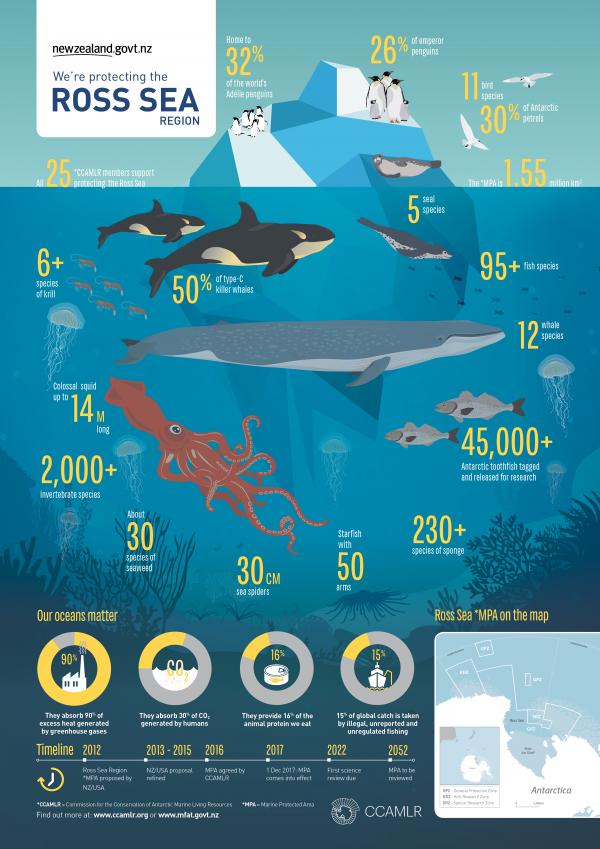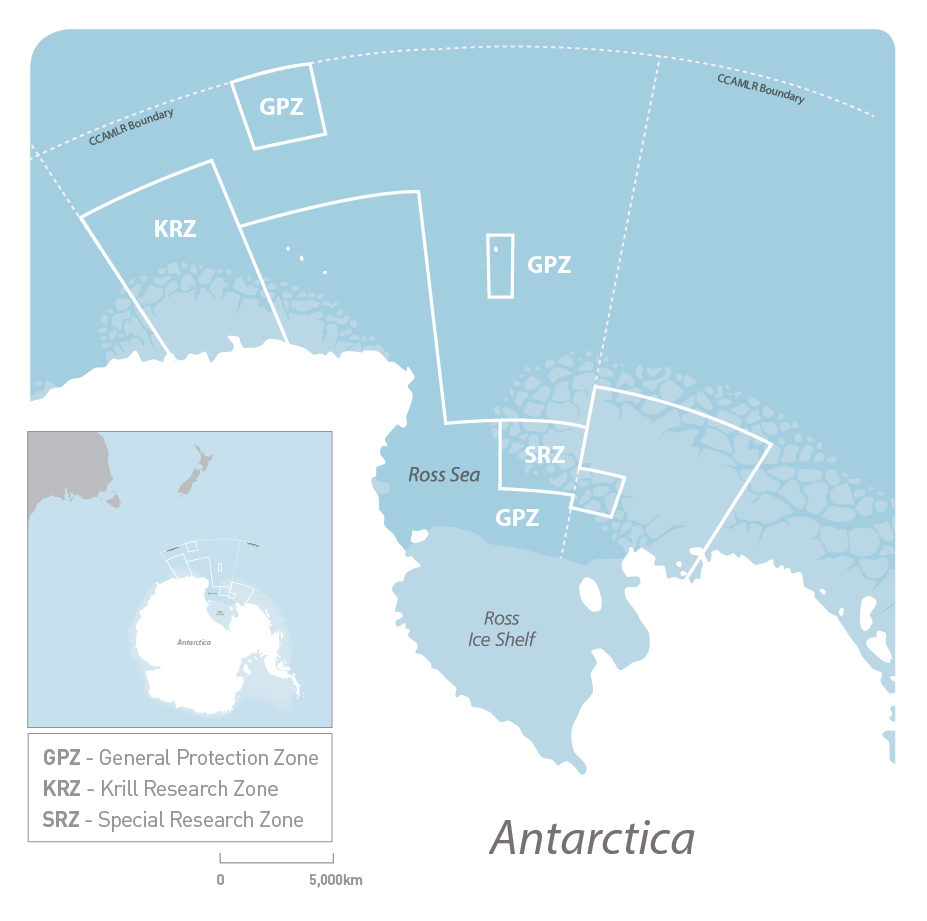On this page
Why the Ross Sea region is special
The region includes one of the most productive areas of the Southern Ocean, the Ross Sea Shelf. At different times of the year the region is home to:
- more than 30% of the world’s Adélie penguins
- around one quarter of all emperor penguins
- around 30% of Antarctic petrels, and
- around half of Ross Sea killer whales.
More than 50% of South Pacific Weddell seals live there year round.
It contains rare and vulnerable benthic species such as unique sponges that live for up to 500 years, breeding grounds and habitats for Antarctic toothfish, and other areas of importance for ecosystem integrity.
Download the poster

The Marine Protected Area agreement

The Ross Sea region contains the world’s largest marine protected area (MPA). It is about 1.5 times the size of the largest national park on land and covers 1.55 million square kilometres, of which 1.12 million square kilometres is fully protected.
Environment, sustainable fishing and science
The MPA balances environmental protection, sustainable fishing and science interests. It protects important habitats and foraging areas for marine mammals, birds, fish, and invertebrates, including iconic species in the region such as Weddell seals, killer whales and emperor penguins.
Major contribution to global marine protection
The MPA was the result of unanimous support for a joint New Zealand/United States proposal within the 25-member Commission for the Conservation of Marine Living Resources (CCAMLR). It was agreed in October 2016 after New Zealand and the United States first put forward their joint proposal in 2012. The Agreement entered into force on 1 December 2017.
This is a significant achievement and represents a major contribution to global marine protection.
Features of the Marine Protected Area
The MPA consists of:
- A ‘no take’ General Protection Zone (a fully protected area where no commercial fishing is permitted) split into three separate areas.
- A Special Research Zone which allows for limited research fishing for krill and toothfish – see SRZ below
- A Krill Research Zone which allows for controlled research fishing for krill, in accordance with the objectives of the MPA – see KRZ below.

Duration
The duration of the MPA has been set at 35 years for the General Protection Zone. The CCAMLR membership needs to agree by consensus to continue the MPA beyond this time.
A shorter duration was agreed for the Special Research Zone. Restrictions on fishing will expire after 30 years. At this time the Scientific Committee will consider whether other measures are required to meet agreed science and protection objectives.
Conservation and scientific research
Research is an important feature of the MPA. The MPA has a number of specific objectives that will be measured over time to ensure the MPA offers effective protection.
The objectives fall into three broad categories:
- Threat mitigation: the MPA should protect the region's ecosystems from threats.
- Representativeness: the MPA should protect an adequate proportion of the marine environments in the region.
- Scientific reference: the MPA requires areas with little or no fishing so we can understand how intact marine ecosystems work.
Assessment and evaluation
CCAMLR will assess the scientific progress made every five years and will evaluate if the objectives are being met, are relevant, or could be improved, every 10 years.
Collaboration encouraged
The MPA strongly encourages members to collaborate with each other on research and monitoring.
Further information
Media release 26 October 2016: Agreement to protect Ross Sea reached(external link)

